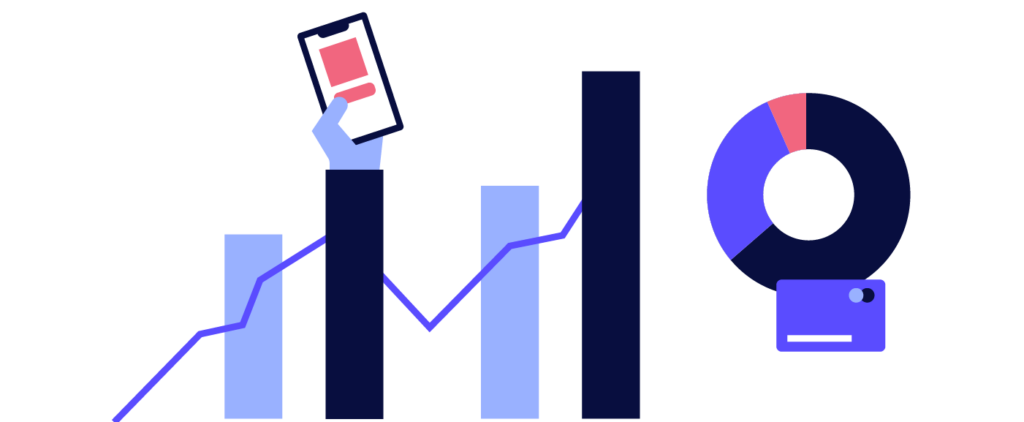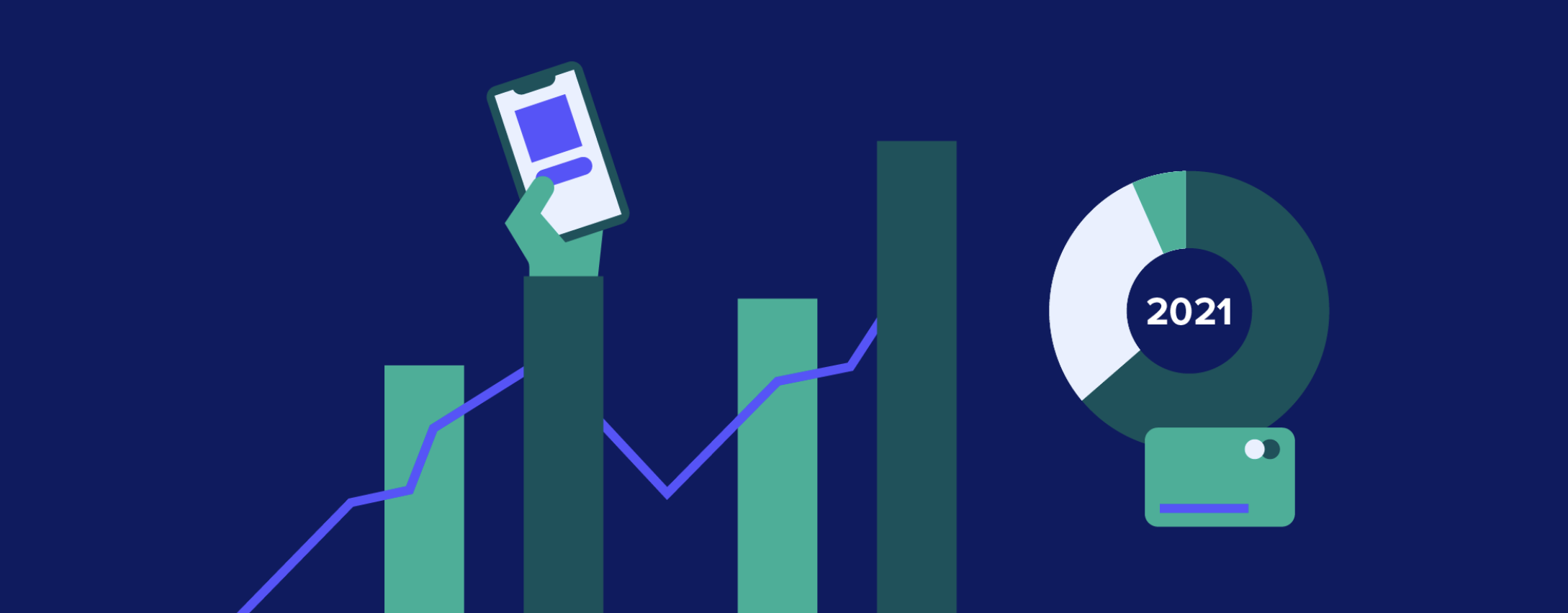Popular Mcommerce Trends and Why They’re Important
What is mCommerce?
Mobile commerce, commonly referred to as mCommerce, is the use of mobile devices to purchase products online. Mcommerce includes various activities such as shopping, online banking, paying bills, and subscribing to platforms.
Mcommerce is growing rapidly, with consumer behaviors and technologies driving new mCommerce trends constantly. An increasing amount of online shoppers are using their mobile phones to make purchases and aren’t showing signs of slowing down. Mcommerce is forecasted to increase and even double its share of retail sales by 2025, and mCommerce trends are keeping up.
mCommerce vs eCommerce
Ecommerce is a general term for purchases made on the internet. Mcommerce, on the other hand, functions as a subcategory of eCommerce, where customers make online using their mobile devices.
The rise of mCommerce
In the past, customers generally preferred browsing shops on mobile but completing their purchases on desktop. Now, that monetization gap is closing as new technologies make mobile shopping more streamlined and widely accessible.
The pandemic at the start of 2020 accelerated mCommerce usage, and newer channels such as live shopping and social commerce went through a growth spurt. With many people restricted indoors throughout much of the pandemic and most households including only a set number of computers, people relied heavily on their smartphones.

With this heightened engagement in mobile commerce, retailers worldwide have had to launch or expand their mobile presence to continue to serve customers. It’s important for eCommerce businesses to keep tabs on the heightened engagement on mobile and mCommerce trends. Mcommerce aims to improve customer experience for higher conversion rate and ultimately an increase in revenue. The outcome is not only greater mCommerce activity, but also increased competition as the online shopping field gets crowded with more players.
Below are a few major mCommerce trends that help eCommerce merchants keep up to date and ahead of the competition.
7 popular mCommerce trends
- Mobile apps: Apps not only offer better personalization and design freedom, but they also give merchants the ability to more easily send notifications to mobile users – who are already on apps 88% of the time, as compared to the mobile website versions of the same store. Apps also overcome the obstacle of abandoned shopping carts due to friction by creating options to save information and checkout with secured payment options.
- Progressive web apps: While the previous generation of mobile-friendly websites was known as responsive, the gold standard today is the Progressive Web App (PWA) – sites that are feature-rich like native apps, yet accessible from any smartphone’s browser. Compared to native apps, PWAs reduce the barrier to entry for first-time and casual shoppers by forgoing the need for download or installation, while still providing an engaging and interactive experience. And compared to mobile responsive sites, PWAs deliver 2-4x faster page load times, significantly reducing bounce rates.
- 5G broadband: Officially released in 2019, 5G was initially reserved for high-ticket smartphones and limited geographic coverage. But by 2024, 5G phones are expected to make up 50% of all new smartphone purchases. 5G is a game-changer for mobile commerce, allowing merchants to make their app stand out with enhanced features like high-resolution video content and virtual/augmented reality. It also gives users a better scrolling (and shopping) experience with faster page loading times.
- Digital wallets & mobile payments: Giving customers the ability to both shop and pay on their phone without having to re-enter their information is a major mCommerce trend that customers appreciate. Digital wallets also allow customers to stay on an eCommerce store’s site or app with little distraction to continue a seamless shopping experience.
- Push notifications: User-friendly push notifications offer customers the ease of being notified of delivery updates, new sales and promos, and personalized recommendations. Customers are also able to customize push notifications so they aren’t overwhelmed or irritated by irrelevant content.
- Same-day delivery platforms: Once intended primarily for restaurant and grocery orders, these apps – such as InstaCart, Deliveroo, and Postmates – have expanded their offerings based on consumer demand. Large retailers from a variety of industries, including cosmetics, home goods, office supplies, and even convenience stores have partnered with the platforms to deliver goods not just within a single day, but often within a single hour.
- Social commerce: Popular social media platforms such as Facebook, Instagram, and TikTok have provided users with the latest mCommerce trend: the ability to shop for things they see directly on the social platform, also commonly implementing “buy buttons”.
With constant and rapid mCommerce trends and developments in mCommerce, it’s up to merchants to keep up with customers’ needs and expectations in order to keep stores relevant and attractive, and to keep loyal customers coming back.
Global online retail sales are expected to surpass the $7 trillion mark by 2025, according to eMarketer. So that’s the good news. However, the bad news is that this notable growth in sales will inevitably lead to a rise in eCommerce Fraud. In this blog, I will discuss top prevention strategies of ecommerce fraud.
Successful eCommerce businesses today design experiences that span channels to address the entire customer journey. Mobile is often at the center of such a strategy.
Policy abuse is soaring, with 75% of eCommerce merchants reporting an increase in the volume of policy abuse in the past two years. How do these grey area fraudulent activities affect online retailers' bottom lines?




